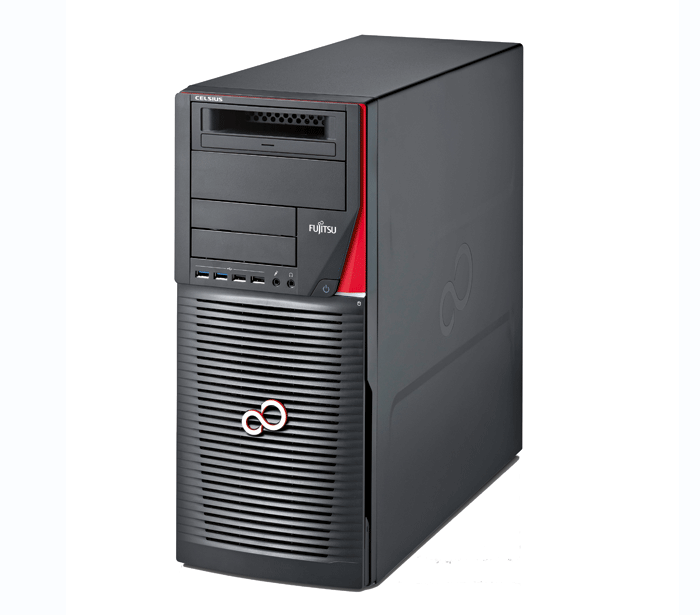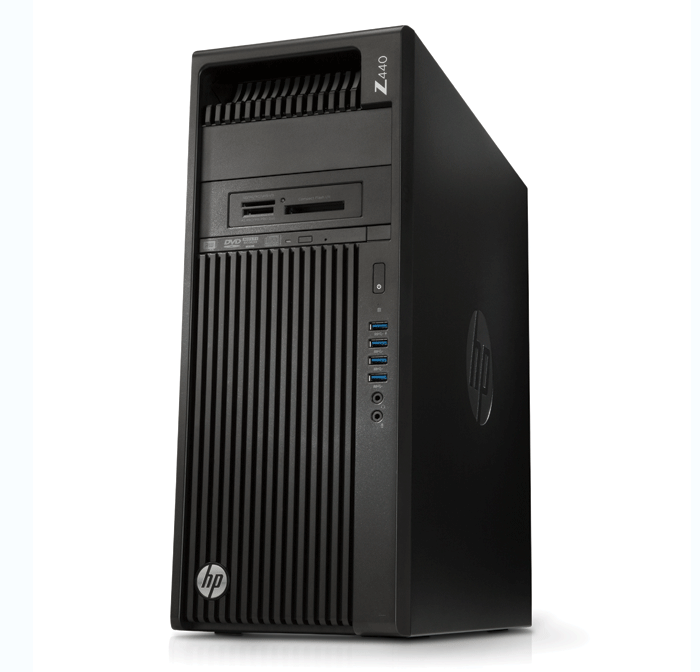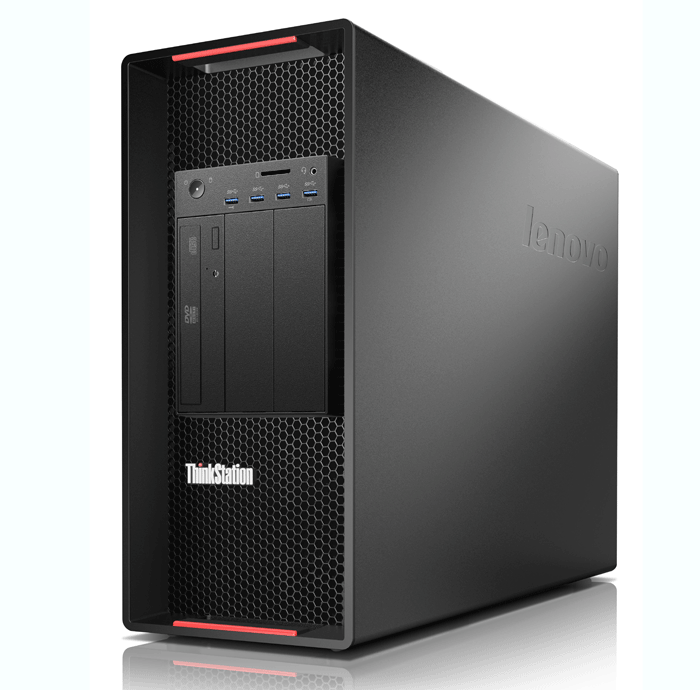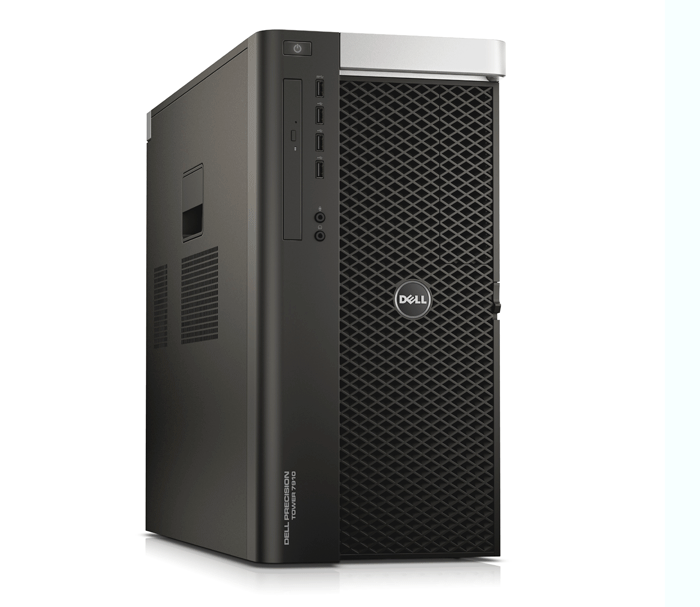New machines from the tier one workstation manufacturers feature Intel Haswell-EP Xeon E5 v3 series CPUs, new GPUs from Nvidia and AMD and a host of new I/O technologies including Thunderbolt 2 and PCIe SSDs
Dell Precision Tower
Fujitsu Celsius

Fujitsu takes a slightly different approach to the other Tier One manufacturers insofar as it only has two Intel Haswell Xeon E5 workstations: the single processor Celsius M740 and the dual processor Celsius R940. Both feature an abundance of CPUs and GPUs — the biggest choice out of all four manufacturers.
This is particularly noticeable in the Celsius M740, which can be fitted with any one of 22 Intel Xeon chips, ranging from the CAD-focused Xeon E5-1630v3 (4 Cores, 3.70 GHz) right up to the Xeon E5-2699v3 (18 cores, 2.30GHz), usually found in dual CPU workstations.
The choice of GPUs is equally extensive with AMD FirePro and Nvidia Quadro represented equally in both machines.
To support such powerful processors Fujitsu has upped the wattage of its Power Supply Units (PSUs) including 1,350W and 1,700W models in the multi-GPU capable Celsius M740power and R940power.
More power means more heat so Fujitsu has had to increase cooling efficiency to reduce noise. Big, low duty fans draw air in at the front and expel at the rear. Airflow has been improved by leaving a gap above a slimline optical drive. The gap also means a handle could be built into the chassis.
Both the Celsius M740 and Celsius R940 boast a front-loading drive bay, which can house 4 x 3.5-inch drives or 8 x 2.5-inch drives which are located with handy ‘Easyrails’.
Fujitsu has also added a PCIe SSD, which it claims offers double the read/write performance of SATA-based SSDs. The PCIe board features two M.2 SSDs, which are currently seen by the OS as individual drives although it may be possible to RAID them in the future. Fujitsu already has plans to introduce a model with a single M.2 SSD, which should give a lower cost of entry, around 1.2 times that of a standard SATA SSD.
At a glance
HP Z Workstation

HP has updated three machines in its HP Z Workstation family. The HP Z440, HP Z640 and HP Z840 all feature a massive choice of Intel Haswell-EP Xeon E5 v3 series CPUs, the full range of Nvidia Quadro GPUs and select models from AMD’s new FirePro family.
There’s a big focus on storage with the HP Z Turbo Drive now available as a standard option in all of its machines. This PCIe solid state drive (SSD) boasts twice the sequential read/write speeds of SATA 6Gb/sec SSDs.
Fast transfer of data to external drives is also possible with optional Thunderbolt 2.0, which is said to be four times as fast as USB 3.0.
The Z440 is HP’s mainstream 3D CAD workstation, featuring a single Xeon CPU, a big choice of professional GPUs, up to 128GB of RAM and up to four 3.5-inch drives.
Out of all the new HP workstations it has arguably undergone the most radical change, with a completely redesigned tool-free chassis, smaller than the Z420 it replaces. It has built in handles, a 9.5mm slim optical bay and two flexible 5.25-inch bays for front access storage or media card readers. There’s one ‘always on’ USB port to charge smart phones and other devices when the machine is off.
HP says the Z440 is also quieter, with a new high-performance CPU air-cooler said to be ‘equal to or better than’ the Z420’s liquid cooler.
The dual processor HP Z640 and HP Z840 are more evolutions of the HP Z620 and HP Z820, featuring tweaked industrial design to give consistency across whole family of Z workstations — desktop and mobile.
The big news is the Z840 can now take more storage. Its four 3.5-inch drive bays, which are tool free and feature blind mate connectors, have been adapted so they can support eight 2.5-inch drives in the same space.
At a glance
Lenovo ThinkStation

Lenovo’s new ThinkStation P-Series has been completely redesigned from the ground up. It features striking industrial design, lots of user serviceable features, impressive customisation and a highly engineered cooling system.
There are three new Haswell-EP Xeon E5-based workstations in the range: the single CPU ThinkStation P500, and the dual CPU ThinkStation P700 and ThinkStation P900.
There’s a big emphasis on flexibility and each workstation can be easily customised to individual user requirements.
FLEX bays at the front can house optical, HDD or additional I/O ports. Inside, the FLEX connector, a small footprint PCIe card, will help deliver new I/O technologies without sacrificing a full sized PCIe slot. An M.2 module can host two 256GB or 512GB SSDs, and Thunderbolt 2 will come next year.
The P-Series is big on storage with the P500 supporting up to 11 drives, the P700 12 drives and the P900 14 drives. Internal FLEX Drive trays offer easy access to a single 3.5-inch drive or two 2.5-inch drives.
Unlike previous ThinkStation generations, the handles are totally integrated into the main body of the chassis. For servicing internal components, red touch points draw the eye to those that can be removed without a screwdriver.
The ThinkStation P-Series is said to run cooler than Lenovo’s previous generation thanks to a brand new thermal design, which builds on the tried and tested principle of drawing in cool air at the front of the workstation and expelling it from the back.
In addition to hardware, Lenovo has introduced its own Performance Tuner Software. It’s not as mature as HP’s Performance Advisor or Dell’s Precision Performance Optimizer (DPPO) but should grow in capabilities in the coming months.






